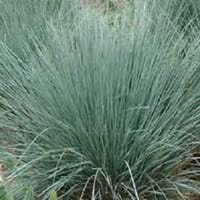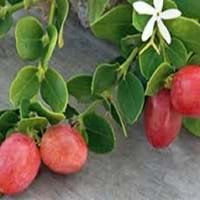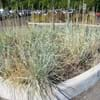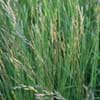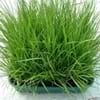Life Span
Perennial
Perennial
Type
Ornamental Grasses and Bamboo
Fruit
Origin
Southern Europe, Western Europe, Mediterranean
Central Asia, Southern Asia, Western Ghats, India
Types
Not Available
congesta, paucinervia
Number of Varieties
Not Available
Habitat
Desert, Dry areas, Dry Forest, Rocky areas
Fertile bottom land, moist forests, Temperate Regions, Tropical Forests
USDA Hardiness Zone
4-9
Not Available
Sunset Zone
1a, 1b, 2a, 2b, 3a, 3b, 4, 5, 6, 7, 8, 9, 10, 11, 14, 15, 16, 17, 18, 19, 20, 21, 22, 23, 24
Not Available
Habit
Cushion/Mound-forming
Upright/Erect
Flower Color
Blue Green
Pale White, White
Flower Color Modifier
Bicolor
Bicolor
Fruit Color
Not Available
Purple, Black
Leaf Color in Spring
Blue Green, Silver, Gray
Green
Leaf Color in Summer
Light Green
Green
Leaf Color in Fall
Blue Green, Silver, Gray
Green
Leaf Color in Winter
Blue Green, Tan, Silver, Gray
Light Green
Leaf Shape
Grass like
Oval
Plant Season
Spring, Summer, Fall, Winter
Spring, Summer, Fall
Sunlight
Full Sun
Full Sun, Partial Sun, Partial shade
Growth Rate
Medium
Medium
Type of Soil
Clay, Loam, Sand
Loam
The pH of Soil
Neutral, Alkaline
Acidic, Neutral, Alkaline
Soil Drainage
Well drained
Well drained
Bloom Time
Late Spring, Early Summer
Spring
Where to Plant?
Container, Ground
Ground
How to Plant?
Rooted stem cutting, Seedlings, Stem Planting
Seedlings, Stem Cutting
Plant Maintenance
Medium
Medium
Watering Requirements
Average Water Needs, occasional watering once established, Requires regular watering, Requires watering in the growing season
Keep the ground moist but not water-logged
In Summer
Lots of watering
Lots of watering
In Spring
Moderate
Moderate
In Winter
Average Water
Average Water
Soil pH
Neutral, Alkaline
Acidic, Neutral, Alkaline
Soil Type
Clay, Loam, Sand
Loam
Soil Drainage Capacity
Well drained
Well drained
Sun Exposure
Full Sun
Full Sun, Partial Sun, Partial shade
Pruning
Cut or pinch the stems, Pinch Tips, Remove damaged leaves, Remove dead branches, Remove dead leaves
Prune if you want to improve plant shape, Remove dead leaves
Fertilizers
All-Purpose Liquid Fertilizer
Compost, fertilize in growing season
Pests and Diseases
Red blotch
Aphids, Earwigs, Insects, Mildew, Red blotch, Rust, sawflies
Plant Tolerance
Salt
Dry soil, Heat And Humidity
Flower Petal Number
Single
Single
Foliage Texture
Fine
Medium
Foliage Sheen
Matte
Matte
Attracts
Butterflies, Hummingbirds
Birds, Butterflies, Fruit Bats
Allergy
Asthma, Itchiness, Rash, Rhinitis
Eczema, Mouth itching, Throat itching
Aesthetic Uses
Ground Cover
Not Available
Beauty Benefits
Not Available
good for lips, Remove blemishes
Environmental Uses
Air purification
Air purification, Food for animals, Food for birds, soil stabilisation
Medicinal Uses
Not Available
Anemia, Diuretic, Potassium, Rich in Iron, Vitamin C
Part of Plant Used
Stem
Fruits, Leaves
Other Uses
Used as Ornamental plant
Added to salads, Cosmetics, Culinary use, Used as a nutritious food item, Used As Food, Used for its medicinal properties
Used As Indoor Plant
No
No
Used As Outdoor Plant
Yes
Yes
Garden Design
Container, Edging, Mixed Border, Rock Garden / Wall
Edible, Fruit / Fruit Tree, Hedges
Botanical Name
HELICTOTRICHON sempervirens
Carissa carandas
Common Name
Blue Oat Grass
Black Currant
In Hindi
ब्लू जई घास
करोंदा, कालि मैना
In German
Blau Ährengras
Carandas
In French
Bleu Oat Grass
karondas
In Spanish
Azul hierba de avena
karondas
In Greek
Μπλε βρώμης Grass
karondas
In Portuguese
Azul Aveia
karondas
In Polish
Niebieski Owies trawa
karondas
In Latin
Blue Oat Grass
karondas
Phylum
Magnoliophyta
Magnoliophyta
Class
Liliopsida
Magnoliopsida
Family
Poaceae
Apocynaceae
Genus
Helictotrichon
Carissa
Clade
Angiosperms, Commelinids, Monocots
Angiosperms, Asterids, Eudicots
Tribe
Aveneae
Not Available
Subfamily
Pooideae
Not Available
Number of Species
Not Available
Not Available
Season and Care of Blue Oat Grass and Karonda
Season and care of Blue Oat Grass and Karonda is important to know. While considering everything about Blue Oat Grass and Karonda Care, growing season is an essential factor. Blue Oat Grass season is Spring, Summer, Fall and Winter and Karonda season is Spring, Summer, Fall and Winter. The type of soil for Blue Oat Grass is Clay, Loam, Sand and for Karonda is Loam while the PH of soil for Blue Oat Grass is Neutral, Alkaline and for Karonda is Acidic, Neutral, Alkaline.
Blue Oat Grass and Karonda Physical Information
Blue Oat Grass and Karonda physical information is very important for comparison. Blue Oat Grass height is 45.00 cm and width 60.96 cm whereas Karonda height is 120.00 cm and width 120.00 cm. The color specification of Blue Oat Grass and Karonda are as follows:
Blue Oat Grass flower color: Blue Green
Blue Oat Grass leaf color: Blue Green, Silver and Gray
Karonda flower color: Pale White and White
- Karonda leaf color: Green
Care of Blue Oat Grass and Karonda
Care of Blue Oat Grass and Karonda include pruning, fertilizers, watering etc. Blue Oat Grass pruning is done Cut or pinch the stems, Pinch Tips, Remove damaged leaves, Remove dead branches and Remove dead leaves and Karonda pruning is done Prune if you want to improve plant shape and Remove dead leaves. In summer Blue Oat Grass needs Lots of watering and in winter, it needs Average Water. Whereas, in summer Karonda needs Lots of watering and in winter, it needs Average Water.
